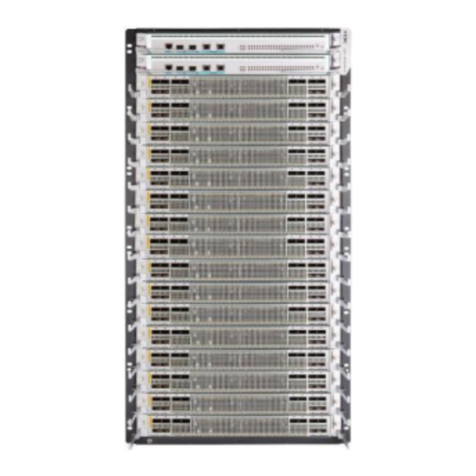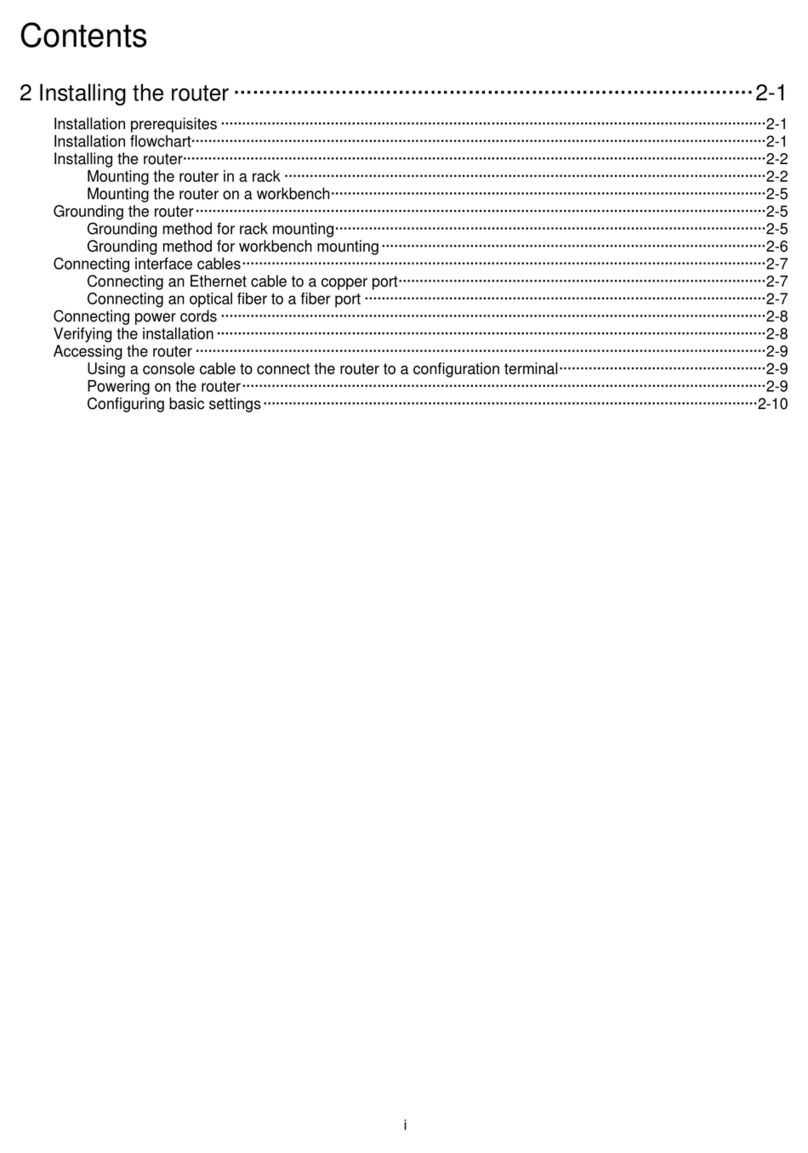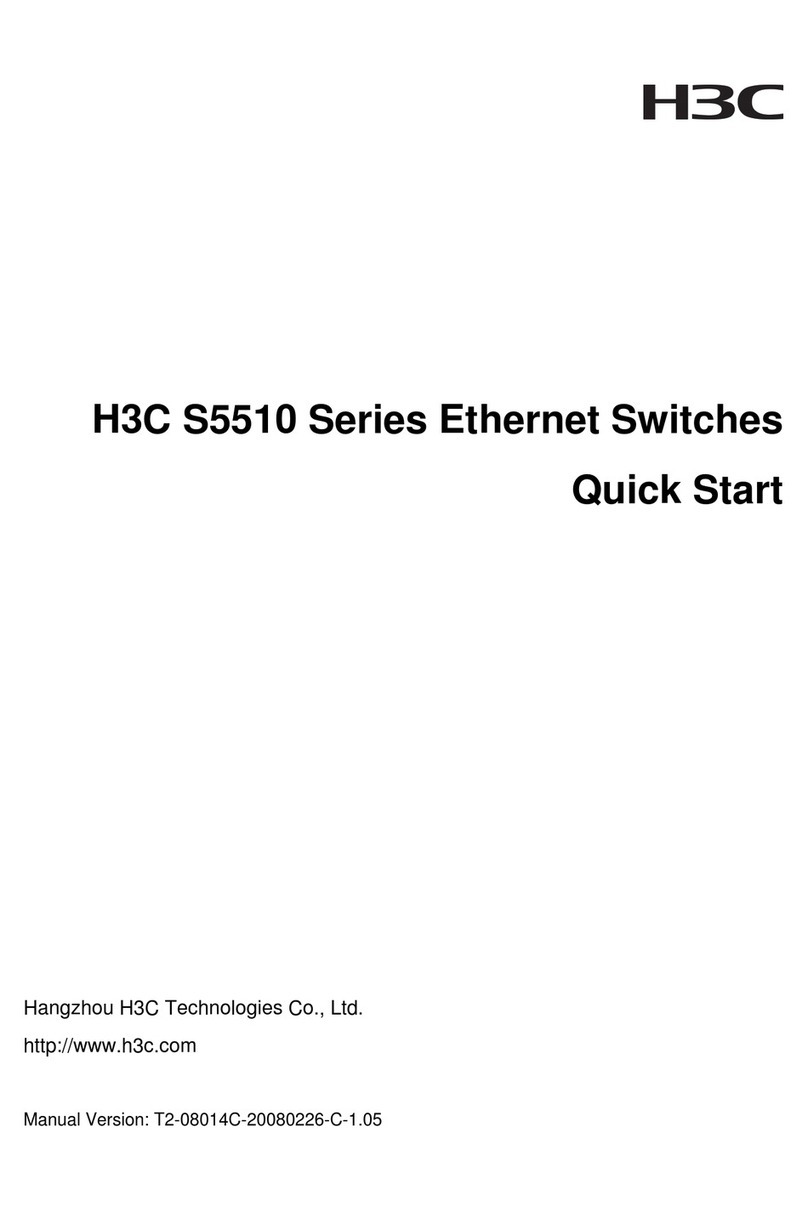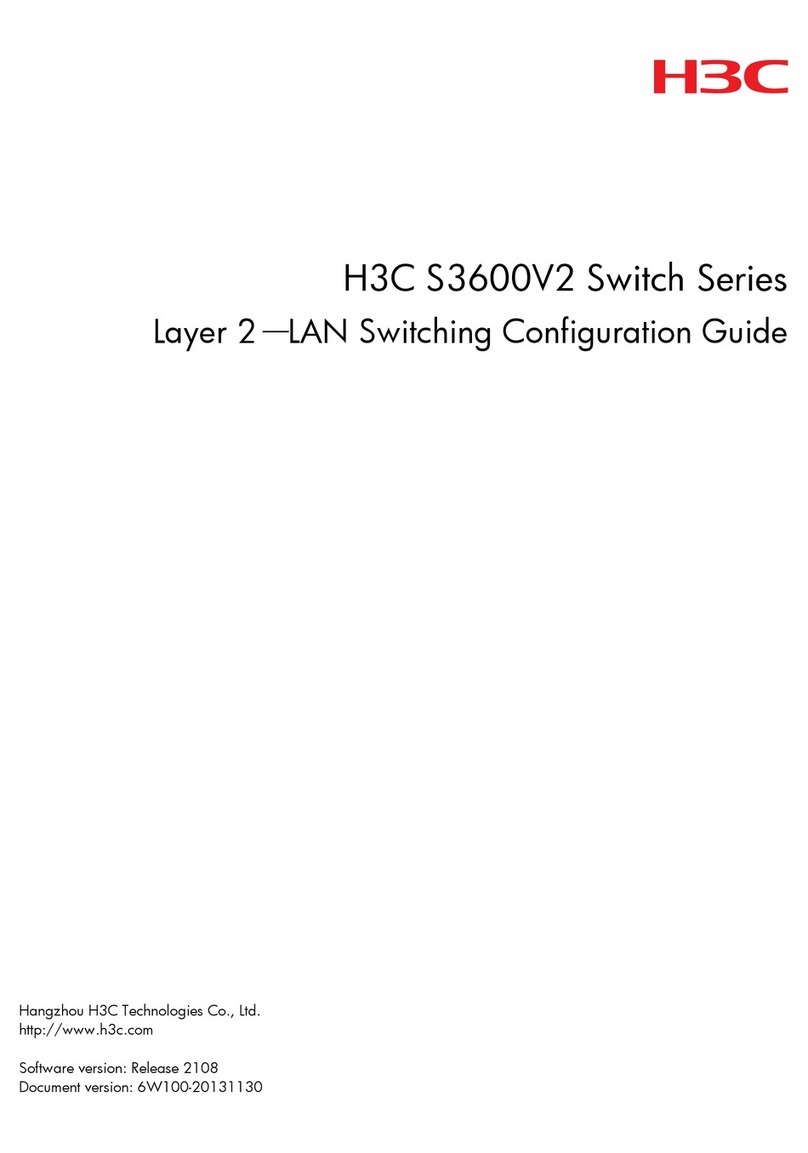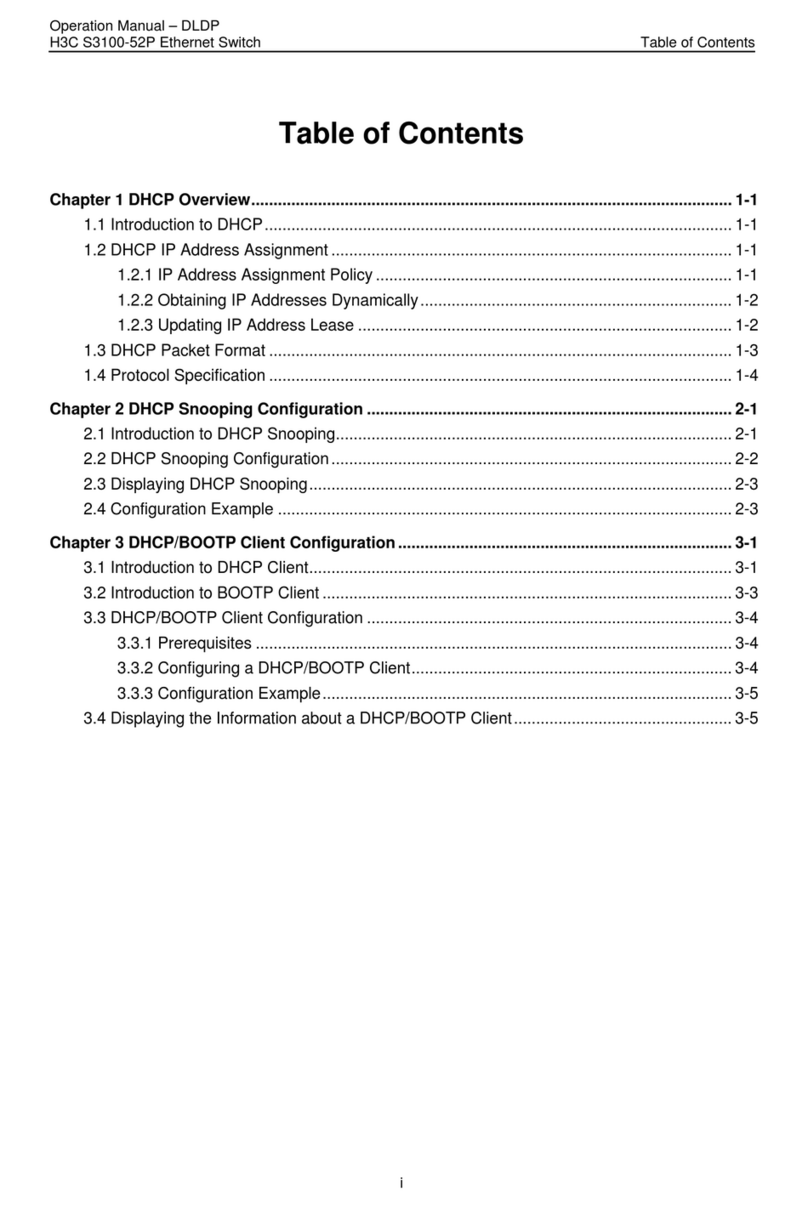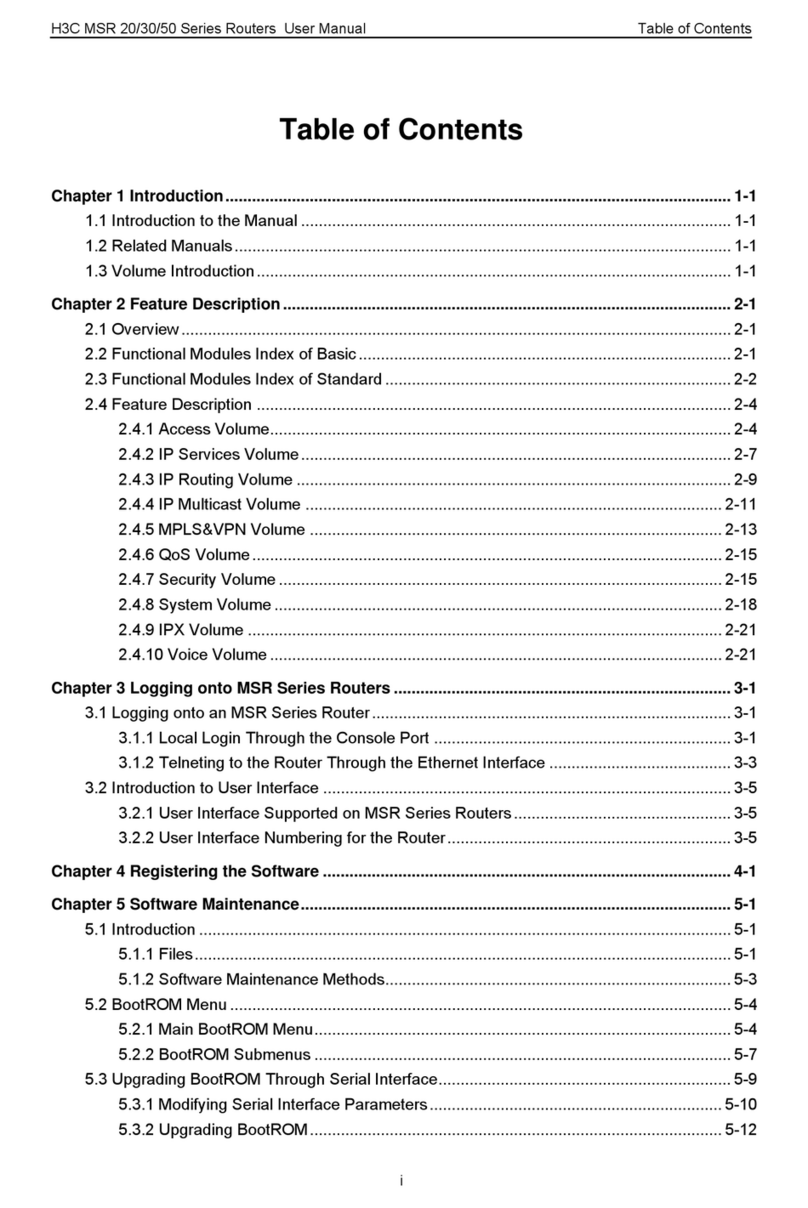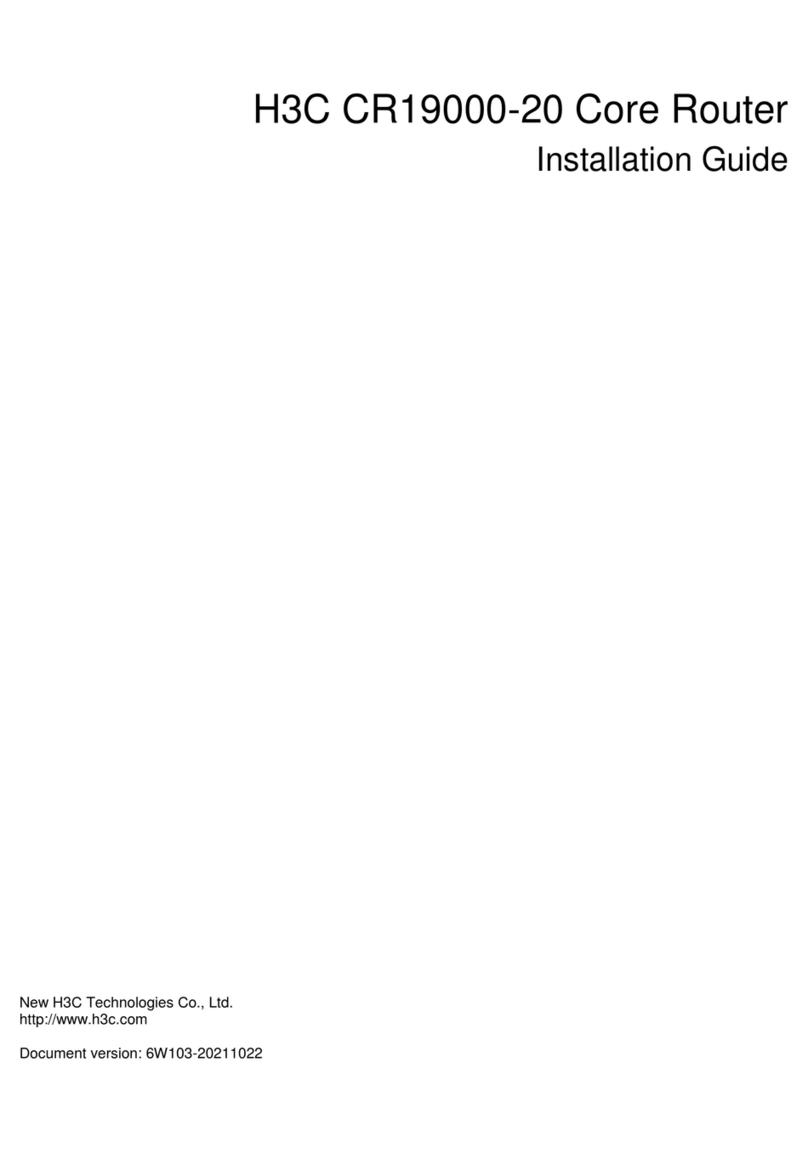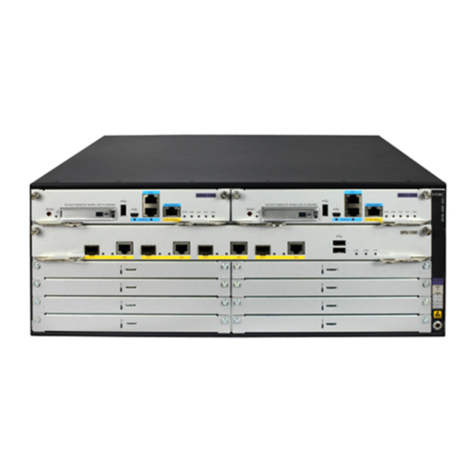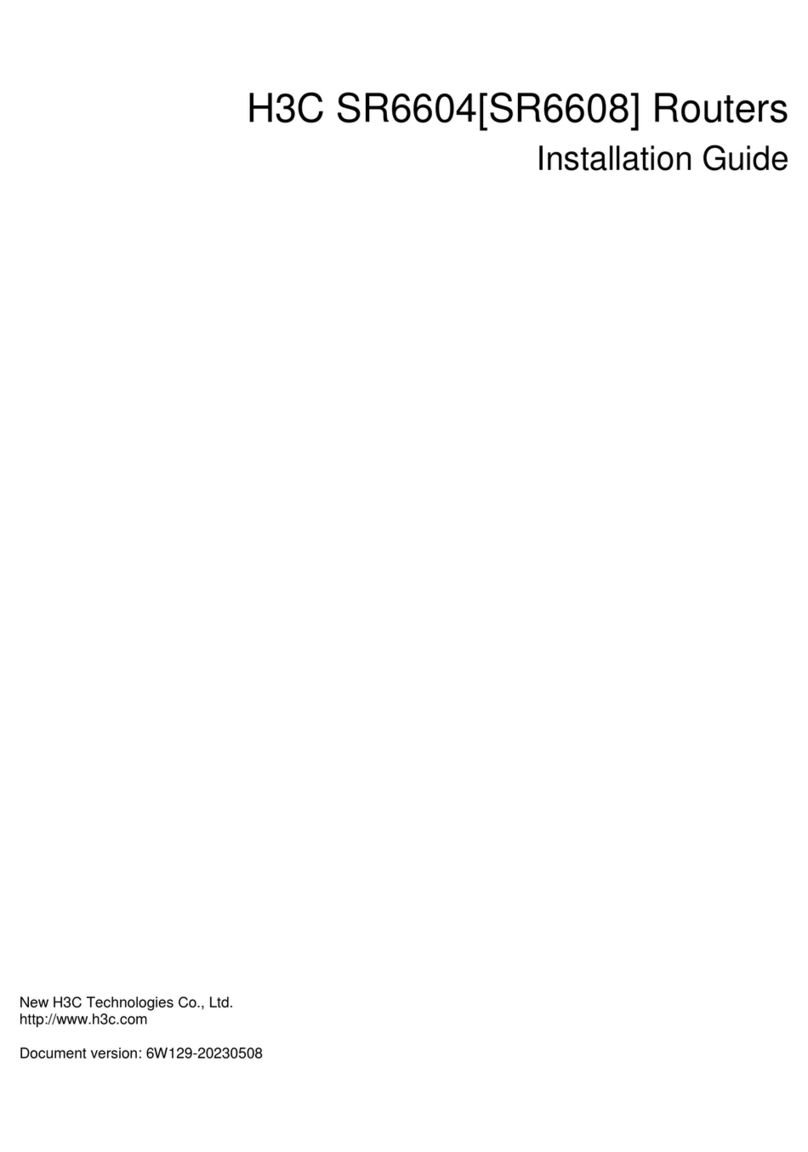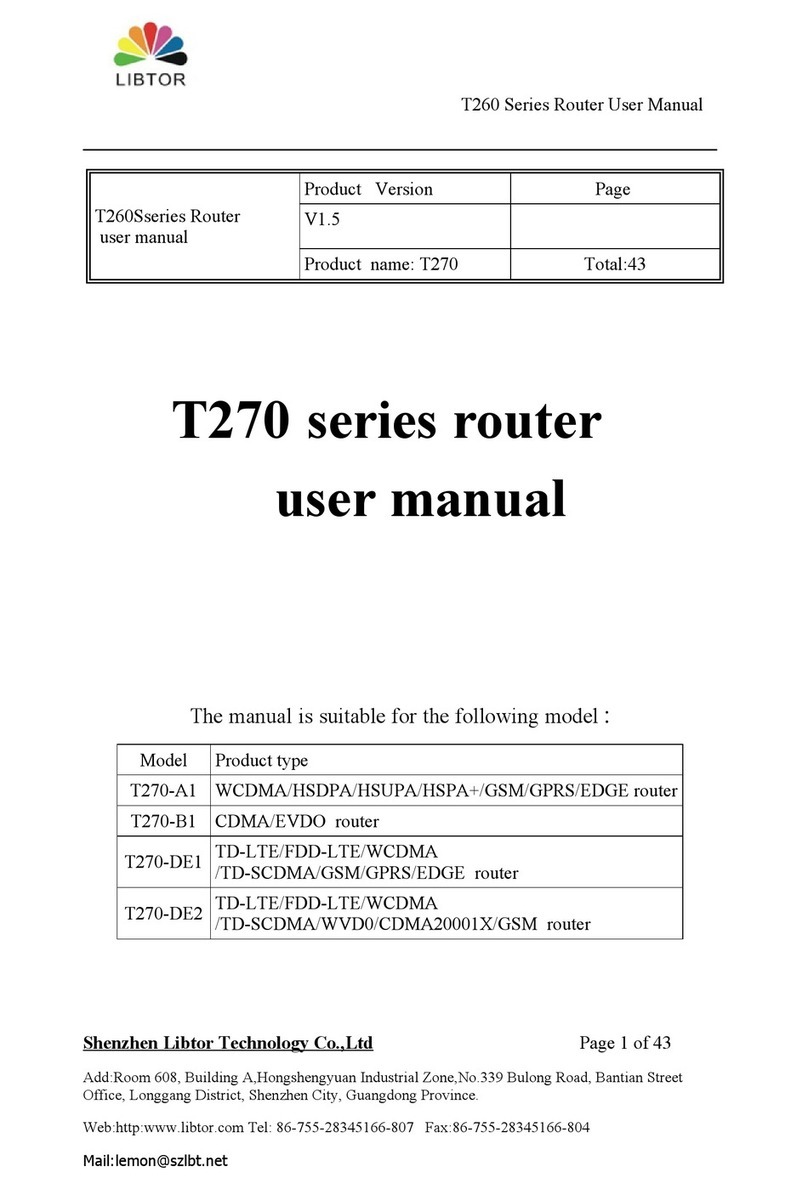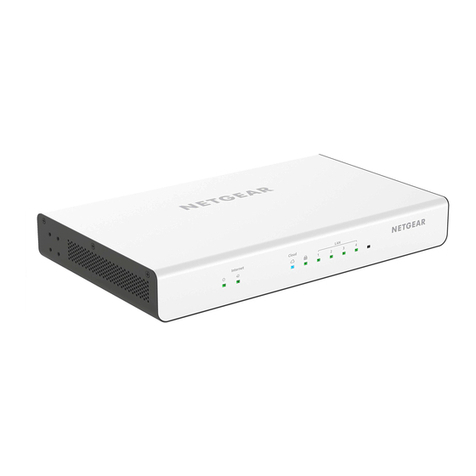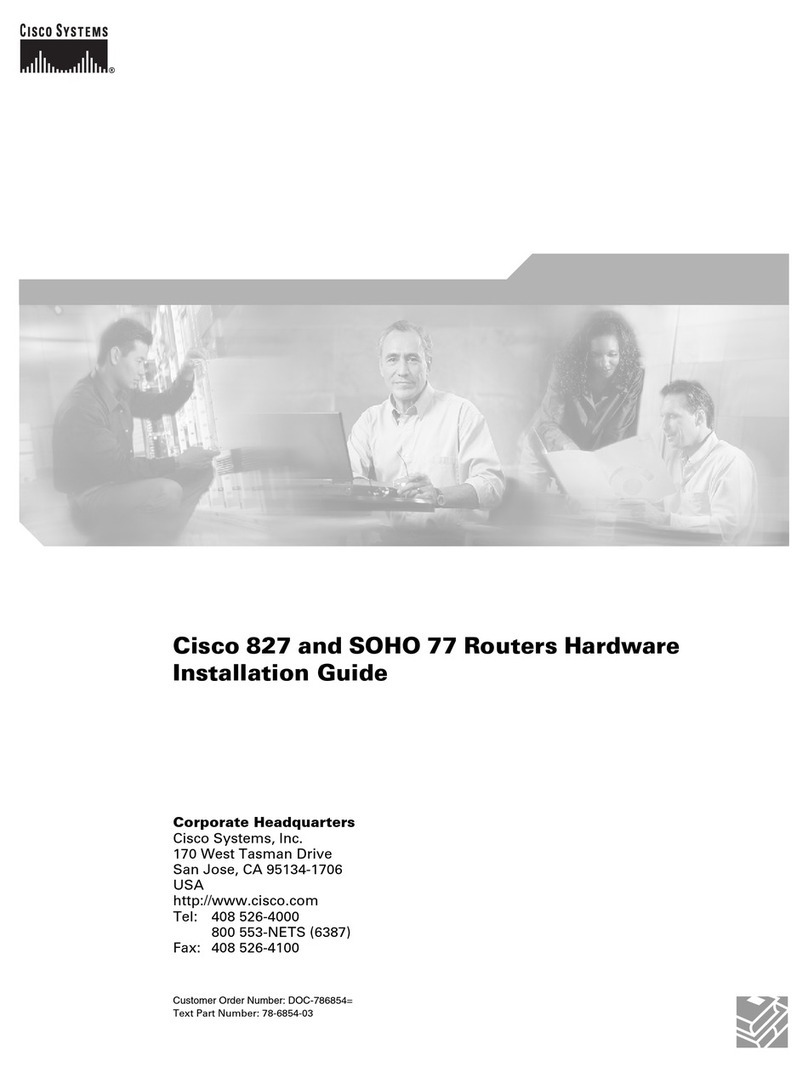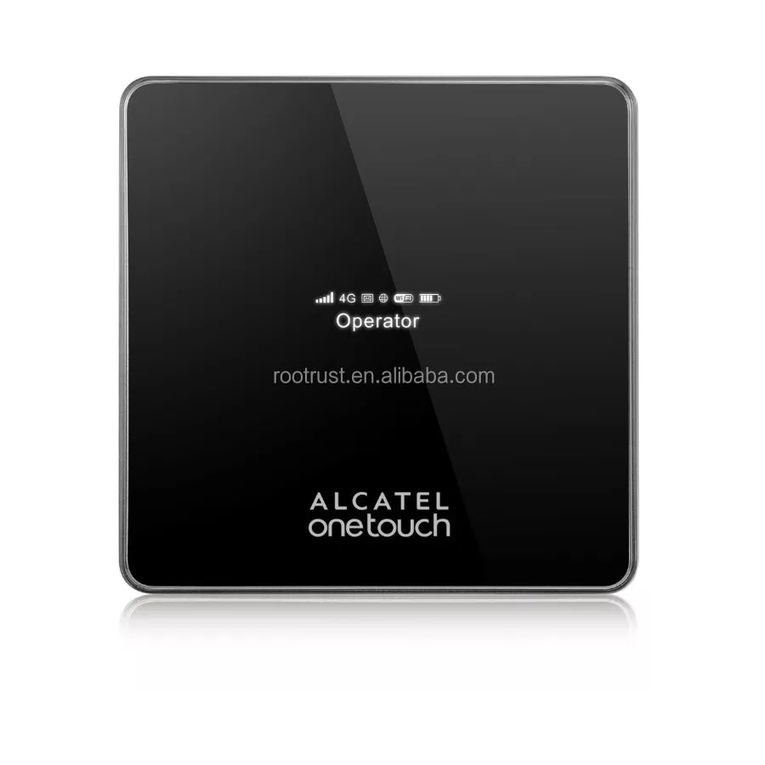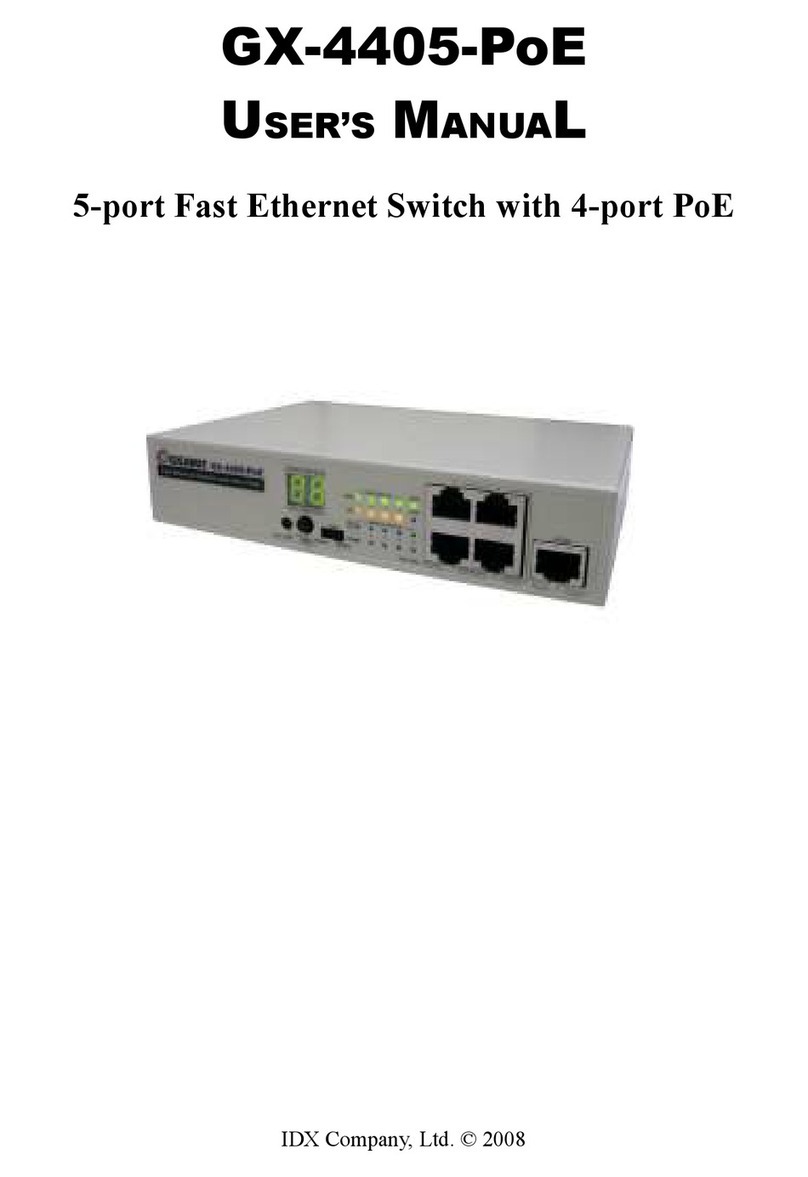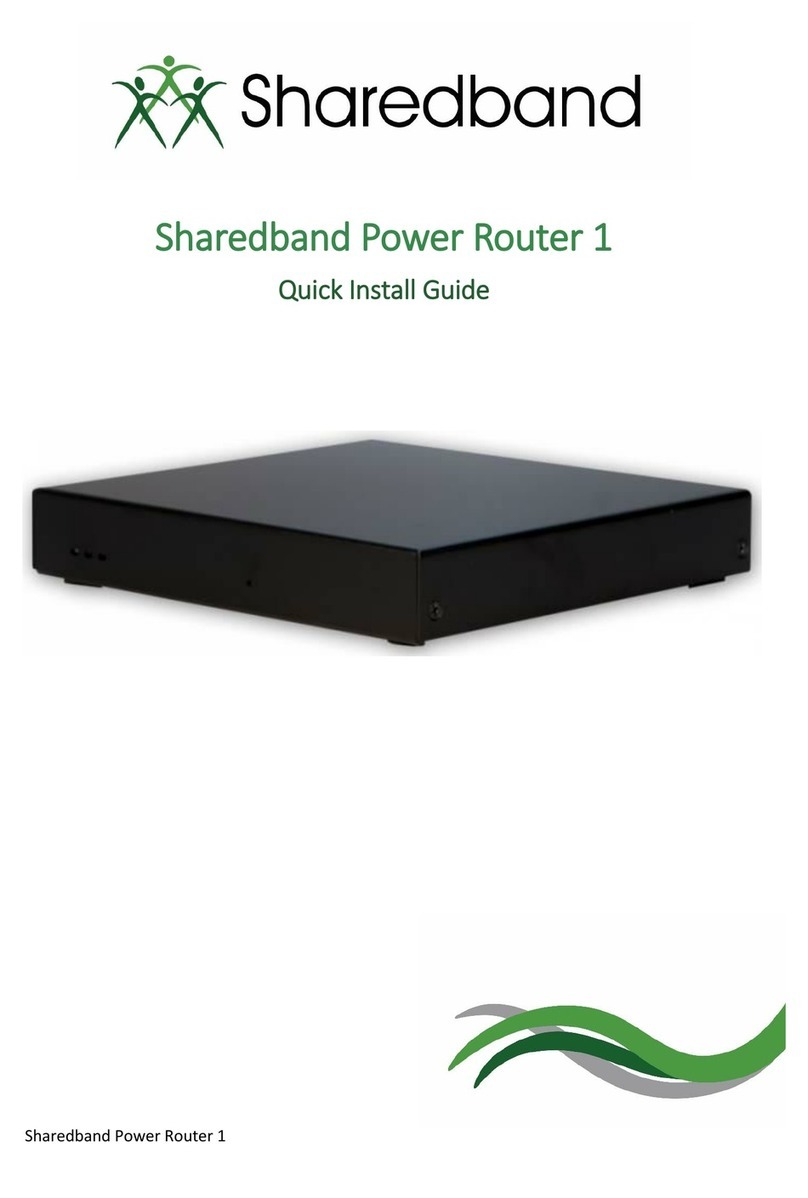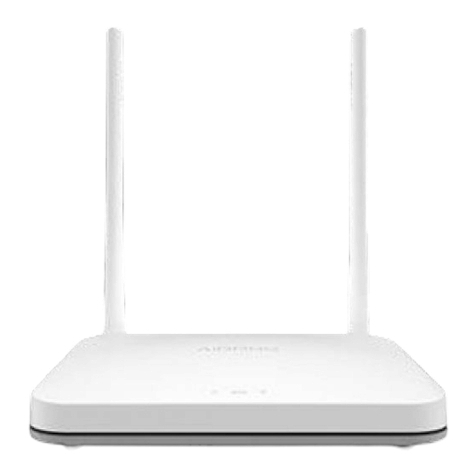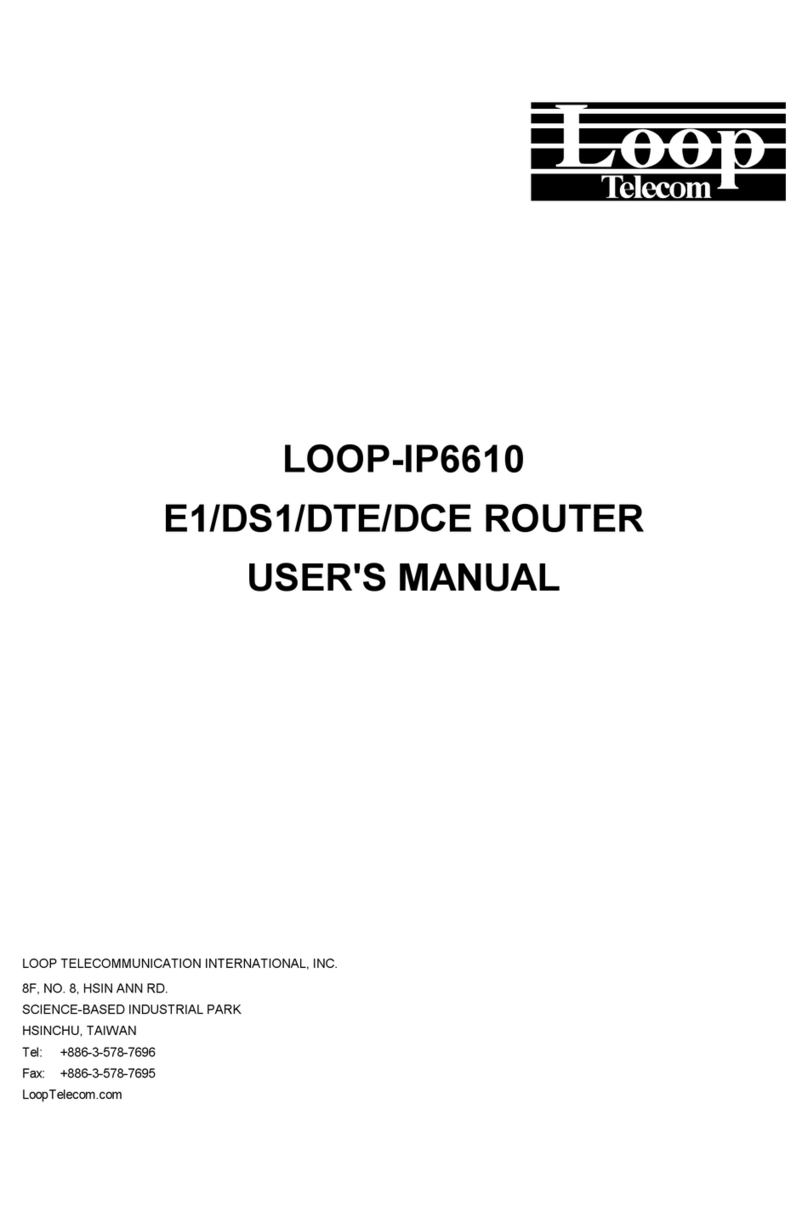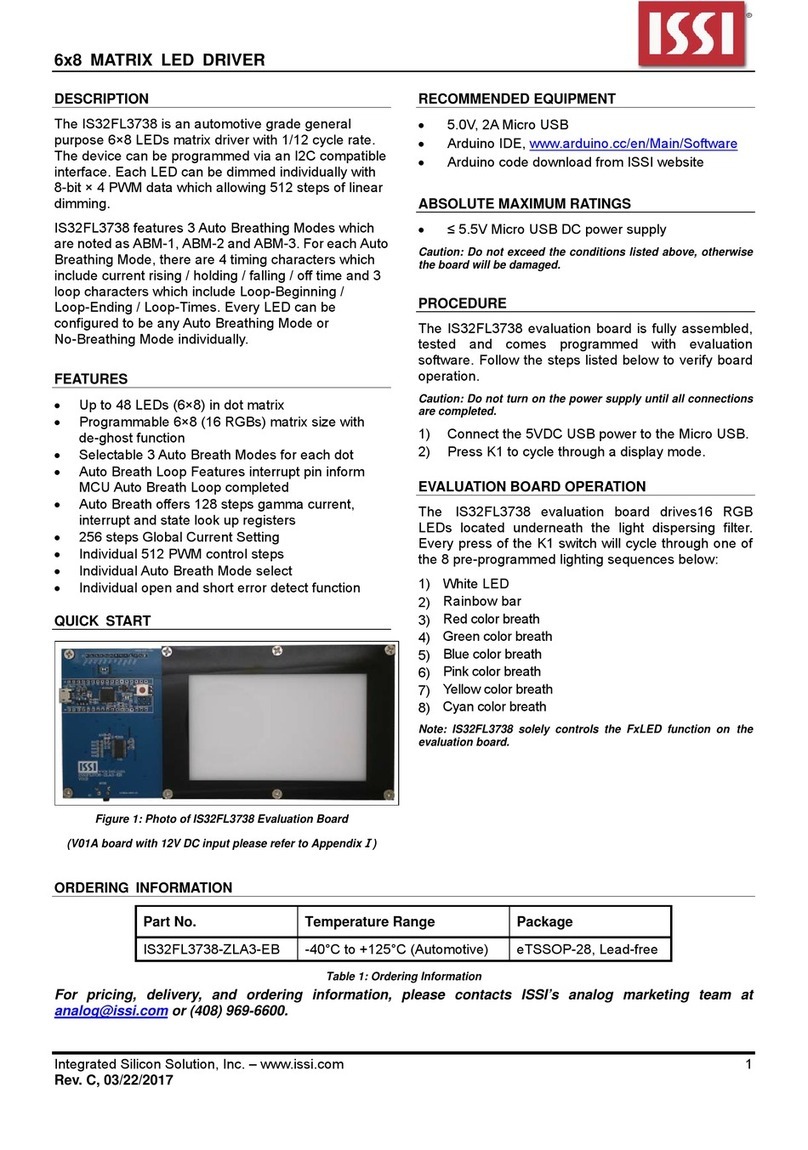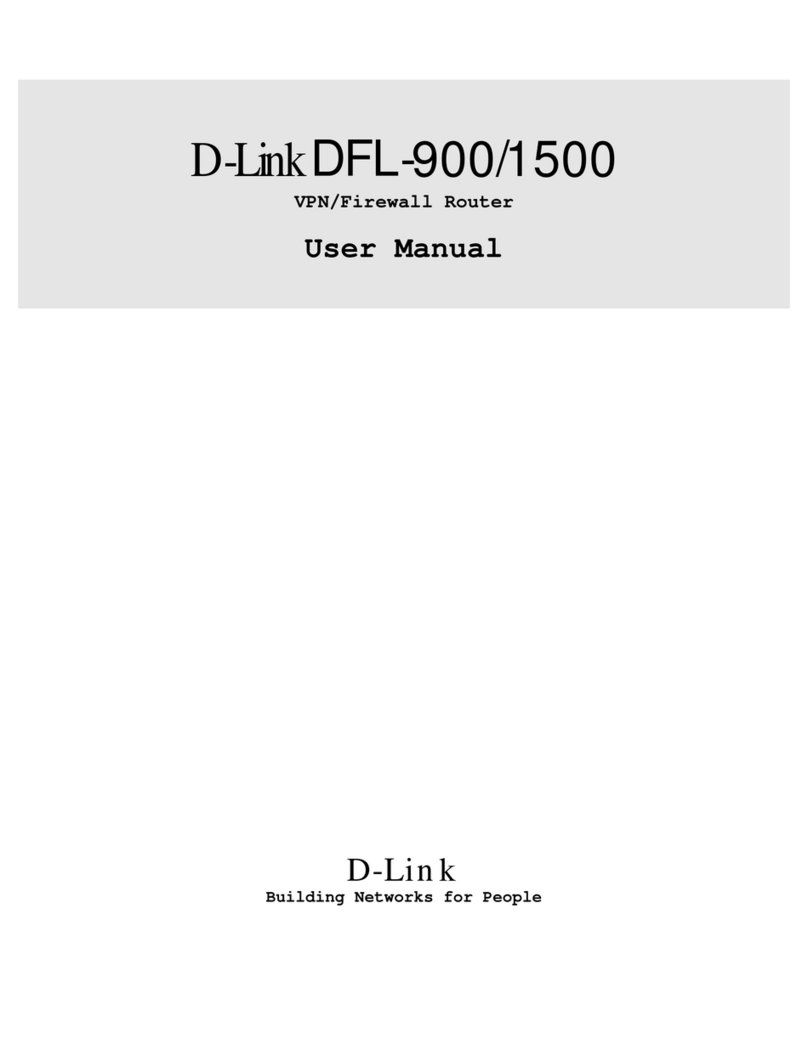H3C S7500 Series User manual

H3C S7500 Series Ethernet Switches
Operation Manual
Hangzhou H3C Technologies Co., Ltd.
http://www.h3c.com
Manual Version: T2-08163Y-20070720-C-1.04
Product Version: Release 3100 Series

Copyright © 2006-2007, Hangzhou H3C Technologies Co., Ltd.
All Rights Reserved
No part of this manual may be reproduced or transmitted in any form or by any means
without prior written consent of Hangzhou H3C Technologies Co., Ltd.
Trademarks
H3C, , Aolynk, , H3Care,
, TOP G, , IRF, NetPilot,
Neocean, NeoVTL, SecPro, SecPoint, SecEngine, SecPath, Comware, Secware,
Storware, NQA, VVG, V2G, VnG, PSPT, XGbus, N-Bus, TiGem, InnoVision and
HUASAN are trademarks of Hangzhou H3C Technologies Co., Ltd.
All other trademarks that may be mentioned in this manual are the property of their
respective owners.
Notice
The information in this document is subject to change without notice. Every effort has
been made in the preparation of this document to ensure accuracy of the contents, but
all statements, information, and recommendations in this document do not constitute
the warranty of any kind, express or implied.
To obtain the latest information, please access:
http://www. h3c.com
Technical Support
customer_service@h3c.com
http://www. h3c.com

About This Manual
Related Documentation
In addition to this manual, each H3C S7500 Series Ethernet Switches documentation
set includes the following:
Manual Description
H3C S7500 Series Ethernet Switches
Command Manual It is used for assisting the users in using
various commands.
H3C S7500 Series Ethernet Switches
Installation Manual It provides information for the system
installation.
Organization
H3C S7500 Series Ethernet Switches Operation Manual is organized as follows:
Part Contents
0 Overview Briefly introduces the new features and network
application added to the Ethernet switch.
1 CLI Introduces the command hierarchy, command view and
CLI features of the Ethernet switch.
2 Login Introduces the ways to log into an Ethernet switch.
3 Configuration File
Management Introduces the ways to manage configuration files.
4 VLAN Introduces VLAN fundamental and the related
configuration.
5 Extended VLAN
Application Introduces Voice VLAN, isolate-user-VLAN, super VLAN
and the related configuration.
6 IP Address-IP
Performance-IPX Introduces IP address, IP performance, IPX fundamental
and the related configuration.
7 GVRP Introduces GVRP and the related configuration.
8 QinQ Introduces QinQ, selective QinQ, and the related
configuration.
9 Port Basic
Configuration Introduces basic port configuration.
10 Link Aggregation Introduces link aggregation and the related
configuration.

Part Contents
11 Port Isolation Introduces port isolation and the related configuration.
12 Port Binding Introduces port binding and the related configuration.
13 DLDP Introduces DLDP and the related configuration.
14 MAC Address Table Introduces MAC address forwarding table and the
related configuration.
15 MSTP Introduces STP, VLAN-VPN tunnel and the related
configurations.
16 Routing Protocol Introduces the routing protocol-related configurations.
17 Multicast Introduces the multicast protocol-related configurations.
18 802.1x Introduces 802.1x, HABP and the related configurations.
19
AAA-RADIUS-HWTAC
ACS-EAD
Introduces AAA, RADIUS, HWTACACS, EAD, and the
related configurations.
20 Traffic Accounting Introduces flow-based accounting and the related
configuration.
21 VRRP-HA Introduces VRRP, HA, and the related configurations.
22 ARP Introduces ARP and the related configuration.
23 DHCP Introduces DHCP and the related configuration.
24 ACL Introduces ACL and the related configuration.
25 QoS Introduces QoS and the related configuration.
26 Mirroring Introduces port mirroring and the related configuration.
27 Cluster Introduces cluster and the related configuration.
28 PoE Introduces PoE and the related configuration.
29 UDP-Helper Introduces UDP Helper and the related configuration.
30 SNMP-RMON Introduces the configuration to manage network devices
through SNMP and RMON.
31 NTP Introduces NTP and the related configuration.
32 SSH Terminal
Service Introduces SSH, SFTP, and the related configurations.
33 File System
Management Introduces basic configuration for file system
management.
34 FTP and TFTP Introduces basic configuration for FTP and TFTP, and
the applications.
35 Information Center Introduces the configuration to analyze and diagnose
networks using the information center.
36 DNS Introduces DNS and the related configuration.

Part Contents
37 System Maintenance
and Debugging Introduces system maintenance and debugging.
38 HWPing Introduces HWPing and the related configuration.
39 RRPP Introduces RRPP and the related configuration.
40
NAT-Netstream-Policy
Routing
Introduces NAT, Netstream, policy-based routing, and
the related configurations.
41 Telnet Protection Introduces Telnet securing and the related configuration.
42
Hardware-Dependent
Software Configuration
Introduces hardware-dependent software and the
related configuration.
Conventions
The manual uses the following conventions:
I. Command conventions
Convention Description
Boldface The keywords of a command line are in Boldface.
italic Command arguments are in italic.
[ ] Items (keywords or arguments) in square brackets [ ] are
optional.
{ x | y | ... }
Alternative items are grouped in braces and separated by
vertical bars. One is selected.
[ x | y | ... ]
Optional alternative items are grouped in square brackets
and separated by vertical bars. One or none is selected.
{ x | y | ... } *
Alternative items are grouped in braces and separated by
vertical bars. A minimum of one or a maximum of all can be
selected.
[ x | y | ... ] *
Optional alternative items are grouped in square brackets
and separated by vertical bars. Many or none can be
selected.
&<1-n> The argument(s) before the ampersand (&) sign can be
entered 1 to n times.
# A line starting with the # sign is comments.

II. GUI conventions
Convention Description
< > Button names are inside angle brackets. For example, click
<OK>.
[ ] Window names, menu items, data table and field names
are inside square brackets. For example, pop up the [New
User] window.
/ Multi-level menus are separated by forward slashes. For
example, [File/Create/Folder].
III. Symbols
Convention Description
Warning Means reader be extremely careful. Improper operation
may cause bodily injury.
Caution Means reader be careful. Improper operation may cause
data loss or damage to equipment.
Note Means a complementary description.

Operation Manual – Overview
H3C S7500 Series Ethernet Switches Table of Contents
i
Table of Contents
Chapter 1 Documentation Obtaining........................................................................................... 1-1
1.1 CD-ROM ............................................................................................................................ 1-1
1.2 H3C Website...................................................................................................................... 1-1
1.3 Software Release Notes .................................................................................................... 1-1
Chapter 2 Related Software Release...........................................................................................2-1
2.1 Related Software Release ................................................................................................. 2-1
2.2 Related Documentation ..................................................................................................... 2-1
Chapter 3 Product Overview........................................................................................................ 3-1
3.1 Introduction ........................................................................................................................ 3-1
3.2 Available Switch Models .................................................................................................... 3-1
3.3 Switching Engines.............................................................................................................. 3-1
3.3.1 Switching Engines and Available Service Cards .................................................... 3-2
3.3.2 Switching Engines and Available Switch Chassis................................................... 3-4
3.4 Software Features ............................................................................................................. 3-5
Chapter 4 Networking Applications.............................................................................................4-1
4.1 Application in a MAN ......................................................................................................... 4-1
4.2 Application in a Small/Medium-Sized Enterprise Network................................................. 4-2
4.3 Application in a Large-Sized Campus Network ................................................................. 4-2
4.4 PoE Application.................................................................................................................. 4-3

Operation Manual – Overview
H3C S7500 Series Ethernet Switches Chapter 1 Documentation Obtaining
1-1
Chapter 1 Documentation Obtaining
Hangzhou H3C Technologies Co., Ltd. provides several ways for your convenience to
obtain documentations (such as product and newly-added-feature documentations) in
time. You can obtain documentations in the following ways:
zCD-ROMs shipped with devices
zH3C website
zSoftware release notes
1.1 CD-ROM
H3C delivers a CD-ROM together with each device. The CD-ROM contains a complete
product documentation set, including the operation manual, command manual,
installation manual, and compatibility manual. After installing the reader program
provided by the CD-ROM, you can search for the desired contents in a convenient way
through the reader interface.
For reasons such as product version upgrade, the manual contents in the CD-ROM are
subject to change without notice. Therefore, the contents in the CD-ROM may not be
the latest version. This document only serves as user guide. Unless otherwise noted,
all information in the document does not claim or imply any warranty. For the latest
software documentation, go to the H3C website.
1.2 H3C Website
Perform the following steps to query and download product documentation from the
H3C website.
Table 1-1 Obtain product documentation from the H3C website
Register
Log into http:// www.h3c.com. Click [Login/Register] on the
home page. Enter your username and password and click
<Register>.
Obtain product
documentation
Click [Documentation Center] on the home page to find the
documentation by product category.
Select a product to display the detailed list of the product.
Specify a device type and select a manual for that product.
1.3 Software Release Notes
With software upgrade, new software features may be added. You can acquire
information about newly added software features through software release notes.

Operation Manual – Overview
H3C S7500 Series Ethernet Switches Chapter 2 Related Software Release
2-1
Chapter 2 Related Software Release
2.1 Related Software Release
The two manuals, H3C S7500 Series Ethernet Switches Operation Manual Release
3100 and H3C S7500 Series Ethernet Switches Command Manual Release 3100, are
corresponding to the software Release 3135 of the S7500 series products.
2.2 Related Documentation
Table 2-1 Related documentation
Manual Version
H3C S7500 Series Ethernet Switches Installation Manual (V1.01)
H3C S7502 Ethernet Switch Installation Manual (V1.01)
H3C S7500 Series Ethernet Switches Operation Manual –
Release 3100 (V1.04)
H3C S7500 Series Ethernet Switches Command Manual –
Release 3100 (V1.04)

Operation Manual – Overview
H3C S7500 Series Ethernet Switches Chapter 3 Product Overview
3-1
Chapter 3 Product Overview
3.1 Introduction
H3C S7500 Series Ethernet Switches (hereinafter referred to as the S7500 series) are
a series of wire-speed Layer 2/3 Ethernet switching products with modular architecture
and high-capacity. Among this series, S7503, S7506 and S7506R are oriented to the
aggregation layer of IP metropolitan area networks (MANs) and the core layer of small-
and medium-sized enterprise networks and campus networks; and S7502 is oriented to
the aggregation and access layers of IP MANs and the core layer of small- and
medium-sized networks. The S7500 series provide powerful switching capability and
increase network availability; they have good scalability, high performance and
powerful network control ability.
3.2 Available Switch Models
Table 3-1 lists the available models of the S7500 series.
Table 3-1 Available models of the S7500 series
Switch
Model Power
supply Total
slots Switching engines Service cards
S7502 2
Single switching engine, in slot
0 One, in slot 1
S7503 4
Single switching engine, in slot
0
Three, in slot 1 to
3
S7506 7
Single switching engine, in slot
0 Six, in slot 1 to 6
S7506
R
AC/DC
redundan
t power
supplies
8 Dual redundant switching
engines, in slot 0 and 1 Six, in slot 2 to 7
3.3 Switching Engines
Switching engines are the cores of the S7500 series. The switching engines you can
select depend on the switch model you select. Table 3-2 and Table 3-3 list the switching
engines available to different S7500 switch models.

Operation Manual – Overview
H3C S7500 Series Ethernet Switches Chapter 3 Product Overview
3-2
Table 3-2 Switching engines available to S7503/S7506/S7506R
Engine model Available to…
Salience III (LS81SRPG) S7503, S7506, S7506R
Salience III Plus (LS81SRPG1) S7503, S7506, S7506R
Salience III Edge (LS81SRPG3) S7503, S7506, S7506R
Table 3-3 Switching engines available to S7502
Engine
model Description
LS81P12TE 4-port 10/100/1000Base-T + 12-port 1000Base-X (SFP) GE SRPU
LS81T12PE 12-port 10/100/1000Base-T + 4-port 1000Base-X (SFP) GE SRPU
LS81T16P 16-port 10/100/1000Base-T + 8-port 1000Base-X (SFP) GE SRPU,
supporting high-speed XG bus
LS81T32P 32-port 10/100/1000Base-T + 16-port 1000Base-X (SFP) GE
SRPU, supporting high-speed XG bus
LS81GT48B 48-port 10/100/1000Base-T GE SRPU, supporting high-speed XG
bus
LS81GP48 48-port 1000Base-X (SFP) GE SRPU, supporting high-speed XG
bus
LS81TGX2 2-port 10GBase-XFP 10GE SRPU, supporting high-speed XG bus
LS81TGX4 4-port 10GBase-XFP 10GE SRPU, supporting high-speed XG bus
3.3.1 Switching Engines and Available Service Cards
There are various models of switching engines and services cards that you can choose
for the S7500 series. But note that the service cards you can select depend on the
switching engine you select. Table 3-4 and Table 3-5 list the service cards available to
different switching engines.
Table 3-4 Switching engines and available service cards for S7503/S7506/S7506R
Switching engine
Service card Salience III Salience III Plus Salience III Edge
LS81FT48E √√√
LS81FT48F √√√
LS81FP48 √√√
LS81GT8UE √— √

Operation Manual – Overview
H3C S7500 Series Ethernet Switches Chapter 3 Product Overview
3-3
Switching engine
Service card Salience III Salience III Plus Salience III Edge
LS82GT20 √√√
LS82GT20A √√√
LS81GT48 √√√
LS81GT48A √√√
LS81GT48B √√—
LS81T12P √√√
LS81T12PE √√√
LS81T16P √√—
LS81T32P √√—
LS81P12T √√√
LS81P12TE √√√
LS81GP8UB √— √
LS82GP20 √√√
LS82GP20A √√√
LS81GP48 √√—
LS81TGX1C √√√
LS81TGX2 √√—
LS81TGX4 √√—
LS81VSNP √√—
Table 3-5 Switching engines and available service cards for S7502
Switching engine
Service card
LS81T12
PE/
LS81P12
TE
LS8
1T1
6P
LS8
1T3
2P
LS81
GT48
B
LS81
GP4
8
LS81
TGX
2
LS81
TGX
4
LS81FT48E √— — — — — —
LS81FT48F √— — — — — —
LS81FP48 √— — — — — —
LS81GT8UE √— — — — — —
LS82GT20 √— — — — — —
LS82GT20A √— — — — — —

Operation Manual – Overview
H3C S7500 Series Ethernet Switches Chapter 3 Product Overview
3-4
Switching engine
Service card
LS81T12
PE/
LS81P12
TE
LS8
1T1
6P
LS8
1T3
2P
LS81
GT48
B
LS81
GP4
8
LS81
TGX
2
LS81
TGX
4
LS81GT48 √— — — — — —
LS81GT48A √— — — — — —
LS81GT48B — √√√√√√
LS81T12P √— — — — — —
LS81T12PE √— — — — — —
LS81T16P — √√√√√√
LS81T32P — √√√√√√
LS81P12T √— — — — — —
LS81P12TE √— — — — — —
LS81GP8UB √— — — — — —
LS82GP20 √— — — — — —
LS82GP20A √— — — — — —
LS81GP48 — √√√√√√
LS81TGX1C √— — — — — —
LS81TGX2 — √√√√√√
LS81TGX4 — √√√√√√
LS81VSNP — √√√√√√
3.3.2 Switching Engines and Available Switch Chassis
S7503, S7506 and S7506R each have two chassis for you to choose. Table 3-6 lists the
switching engines and available chassis for S7503/S7506/S7506R.
Table 3-6 Switching engines and available chassis for S7503/S7506/S7506R
Engine
Chassis Salience III Salience III Plus Salience III Edge
S7503 √[1] √[1] √[1]
S7503 XGbus √√√
S7506 √√√
S7506 XGbus √√√

Operation Manual – Overview
H3C S7500 Series Ethernet Switches Chapter 3 Product Overview
3-5
Engine
Chassis Salience III Salience III Plus Salience III Edge
S7506R √[2] √√[2]
S7506R XGbus √√√
[1] : When an Salience III series engine is used together with an S7503 chassis (with no
XGbus silkscreen), you must use the product 7503 command in system view to
identify the device as an S7503 switch and then restart the switch.
[2]: When a Salience III/Salience III Edge engine is used together with an S7506R
chassis (with no XGbus silkscreen), the four SFP interfaces on the engine will not work.
3.4 Software Features
The S7500 series provide rich software features, thus meeting the requirements of
different users. Table 3-7 lists the software features in different modules.
Table 3-7 Software features of the S7500 series
Module Features supported
01-CLI
zCommand line interface (CLI)
zHierarchical protection for commands
zOnline help for commands
02-Login
zLocal login through the Console port
zTelnet/SSH login through an Ethernet port
zModem login through the Console port
zNMS Login
03-Configuration
file management Saving/restoring/deleting configuration file
04-VLAN
zIEEE 802.1Q-compliant VLAN (virtual local area network)
zPort-based VLAN
zProtocol-based VLAN
05-Extended VLAN
application
zVoice VLAN
zisolate-user-VLAN
zSuper VLAN
06-IP address-IP
performance-IPX
zIP address configuration of the switch
zTCP attribute configuration of the switch
zIPX (internetwork packet exchange)
07-GVRP GVRP (GARP VLAN registration protocol)
08-QinQ zQinQ (that is, VLAN VPN)
zFlexible QinQ

Operation Manual – Overview
H3C S7500 Series Ethernet Switches Chapter 3 Product Overview
3-6
Module Features supported
09- Port Basic
configuration
zThree port states: access, trunk, hybrid
zGlobal broadcast suppression on ports
zLoopback detection
zCable test
10-Link
Aggregation LACP (link aggregation control protocol)
11-Port Isolation Port isolation group configuration
12-Port Binding MAC address-to-port binding
13-DLDP DLDP (device link detection protocol)
14-MAC Address
Table
zManually configuring dynamic/static MAC address entries
zConfiguring the aging time of MAC address entries
zConfiguring the maximum number of MAC addresses that
can be learned on a port
zInter-chip synchronization of MAC address entries
15-MSTP
zSTP (spanning tree protocol)/RSTP (rapid STP)/MSTP
(multiple STP)
zQinQ BPDU tunneling
zH3C's MSTP path cost standard
16-Routing
Protocol
zStatic routing
zRIP (routing information protocol) v1/v2
zOSPF (open shortest path first)
zBGP (border gateway protocol)
zIS-IS (intermediate system-to-intermediate system)
zRoute policy
17-Multicast
zIGMP Snooping (internet group management protocol
snooping)
zIGMP (internet group management protocol)
zPIM-DM (protocol-independent multicast-dense mode)
zPIM-SM (protocol-independent multicast-sparse mode)
18-802.1x
z802.1x authentication
zGuest VLAN
zHABP (Huawei authentication bypass protocol)
19-AAA-RADIUS-H
WTACACS-EAD
zAAA (authentication, authorization and accounting)
zRADIUS (remote authentication dial-in user service)
zHWTACACS (Huawei terminal access controller access
control system)
zEAD (endpoint admission defense)
20-Traffic
Accounting Only supported by the LS81VSNP service card
21-VRRP-HA zVRRP (virtual router redundancy protocol)
zHA (high availability)

Operation Manual – Overview
H3C S7500 Series Ethernet Switches Chapter 3 Product Overview
3-7
Module Features supported
22-ARP
zGratuitous ARP
zARP source suppression
zManual configuration of ARP entries
zProxy ARP
23-DHCP
zDHCP Server (DHCP: dynamic host configuration
protocol)
zDHCP Relay
zDHCP Snooping
zOption 82 in DHCP Relay
zOption 82 in DHCP Snooping
24-ACL
zBasic ACL (access control list)
zAdvance ACL
zLayer 2 ACL
zUser-defined ACL
25-QoS QoS (quality of service)
26-Mirroring
zTraffic mirroring
zPort mirroring
zRemote port mirroring (RSPAN, remote switched port
analyzer)
zRemote traffic mirroring
27-Cluster
zHGMP (Huawei group management protocol) v2
zNDP (neighbor discovery protocol)
zNTDP (neighbor topology discovery protocol)
28-PoE zPoE (power over Ethernet)
zPoE PSU supervision
29-UDP-Helper UDP broadcast forwarding implemented through UDP Helper
30-SNMP-RMON
zSNMP v3, and SNMP v1/v2 compatibility (SNMP: simple
network management protocol)
zRMON (remote monitoring)
31-NTP zNTP (network time protocol)
32-SSH Terminal
Service
zSSH (secure shell)
zSFTP (secure FTP)
33-File System
Management File system management
34-FTP and TFTP zFTP Server/Client
zTFTP Client
35-Information
Center
zSystem logging
zHierarchical alarming
zDebugging output
36-DNS DNS (domain name system)
37-System
Maintenance and
Debugging
zConfiguring system time
zDisplaying and configuring system status

Operation Manual – Overview
H3C S7500 Series Ethernet Switches Chapter 3 Product Overview
3-8
Module Features supported
38-HWPing HWPing
39-RRPP RRPP (rapid ring protection protocol)
40-NAT-Netstream
-Policy Routing
zNAT (network address translation)
zNetStream
zpolicy routing
41-Telnet
Protection Remote login protection
42-Hardware-Depe
ndent Software
Configuration
zPoE DIMM (dual in-line memory module) memory card
software upgrade
zBoot ROM upgrade by app file
zInter-card link state adjust
zInternal channel monitor

Operation Manual – Overview
H3C S7500 Series Ethernet Switches Chapter 4 Networking Applications
4-1
Chapter 4 Networking Applications
The high-capacity, Layer 2/3 S7500 Series Ethernet Switches are mainly designed for
IP MANs, large-sized enterprise networks and campus networks. They can serve as
aggregation switches to play important role in MANs, or serve as core switches in
enterprise or campus networks. This series, together with the H3C
S3100/S3600/S5600/S9500 series and Huawei's MA5200 Ethernet access
management system, allows for comprehensive solutions for MAN and enterprise
networking.
The following sections describe several typical networking applications of the S7500
series.
4.1 Application in a MAN
Typically, an S7500 series switch can be used at the aggregation layer in a MAN. In
upstream direction, the switch is connected to a Layer 3 switch (for example, a H3C
S9500 series routing switch) or a GSR (Gigabit switching router) in the backbone
network through a GE link across long/ultra-long haul dark fiber cable (you can also use
multi-GE Trunk to increase upstream bandwidth). In downstream direction, the switch is
connected to the egress Layer 2/3 Ethernet switches (for example, H3C
S3100/3600/S7500 series switches) in LANs through GE ports across long/ultra-long
haul dark fiber cables (you can also use multi-GE Trunk to increase downstream
bandwidth).
Figure 4-1 Application in a MAN

Operation Manual – Overview
H3C S7500 Series Ethernet Switches Chapter 4 Networking Applications
4-2
4.2 Application in a Small/Medium-Sized Enterprise Network
Typically, an S7500 series switch can be used at the backbone layer in a
small/medium-sized enterprise network. The switch is connected to its neighboring
devices as follows: In the downstream direction, the switch is connected to the Layer
2/3 Ethernet switches (for example, H3C S3100/S3600 series switches) of workgroups
or directly connected to user's workstations through GE/FE optical or electrical ports; it
is connected to other floors/buildings through GE optical ports (long- or short-haul) or
multi-GE Trunks; and it is connected to server groups through GE/FE electrical ports. In
the upstream direction, it is connected to a router through a 10/100 Mbps electrical port.
Figure 4-2 Application in a small/medium-sized enterprise network
4.3 Application in a Large-Sized Campus Network
Typically, an S7500 series can be used at the aggregation or backbone layer in a
large-sized campus network. In this case, it is often deployed in cabling room or center
office. In the downstream direction, the switch is connected to the
workgroup/campus-level Layer 2/3 Ethernet switches (H3C S3100/S3600 series
switches) through GE/FE optical or electrical ports. In the upstream direction, it is
connected to a backbone Ethernet switch or a router through a GE optical/electrical
port.

Operation Manual – Overview
H3C S7500 Series Ethernet Switches Chapter 4 Networking Applications
4-3
Figure 4-3 Application in a large-sized campus network
4.4 PoE Application
Through the GE/FE electrical ports on a PoE-supported card, an S7500 series switch
can supply power to PoE-supported PDs (powered devices, such as wireless WLAN
APs, IP phones and corridor switches) across twisted pairs.
Figure 4-4 PoE application
Other manuals for S7500 Series
29
Table of contents
Other H3C Network Router manuals
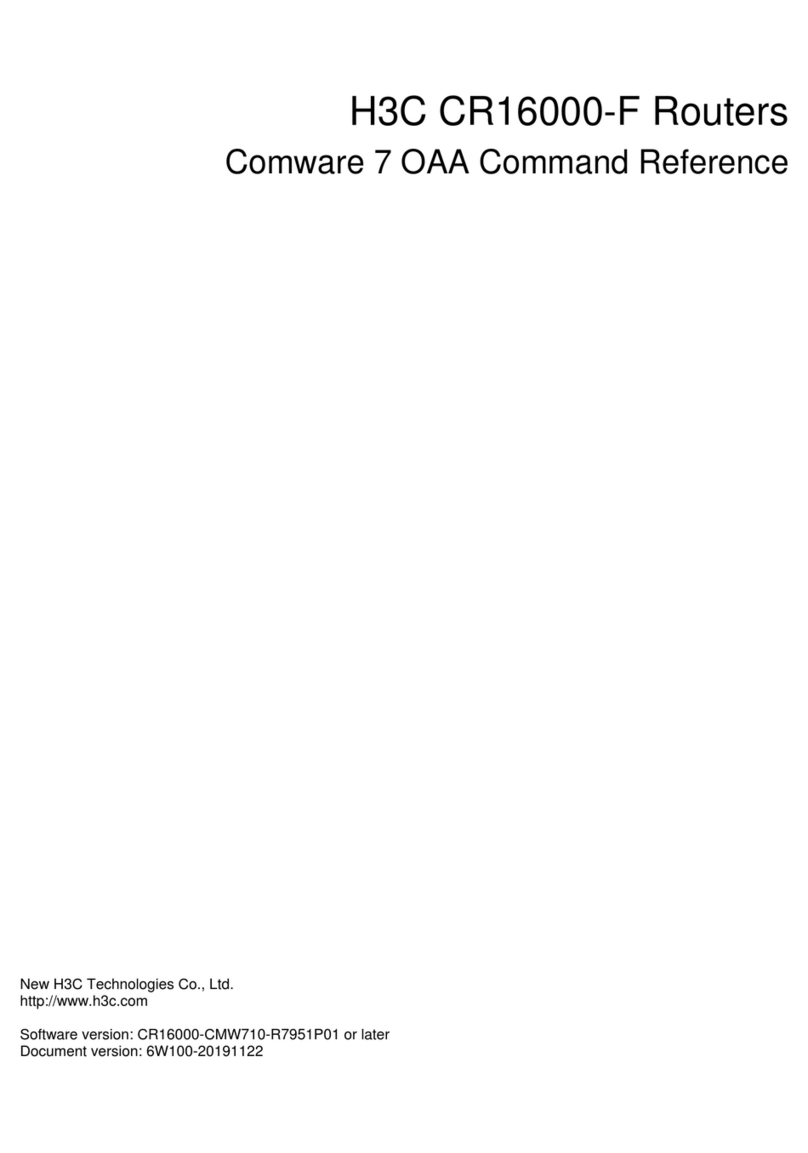
H3C
H3C CR16000-F User manual
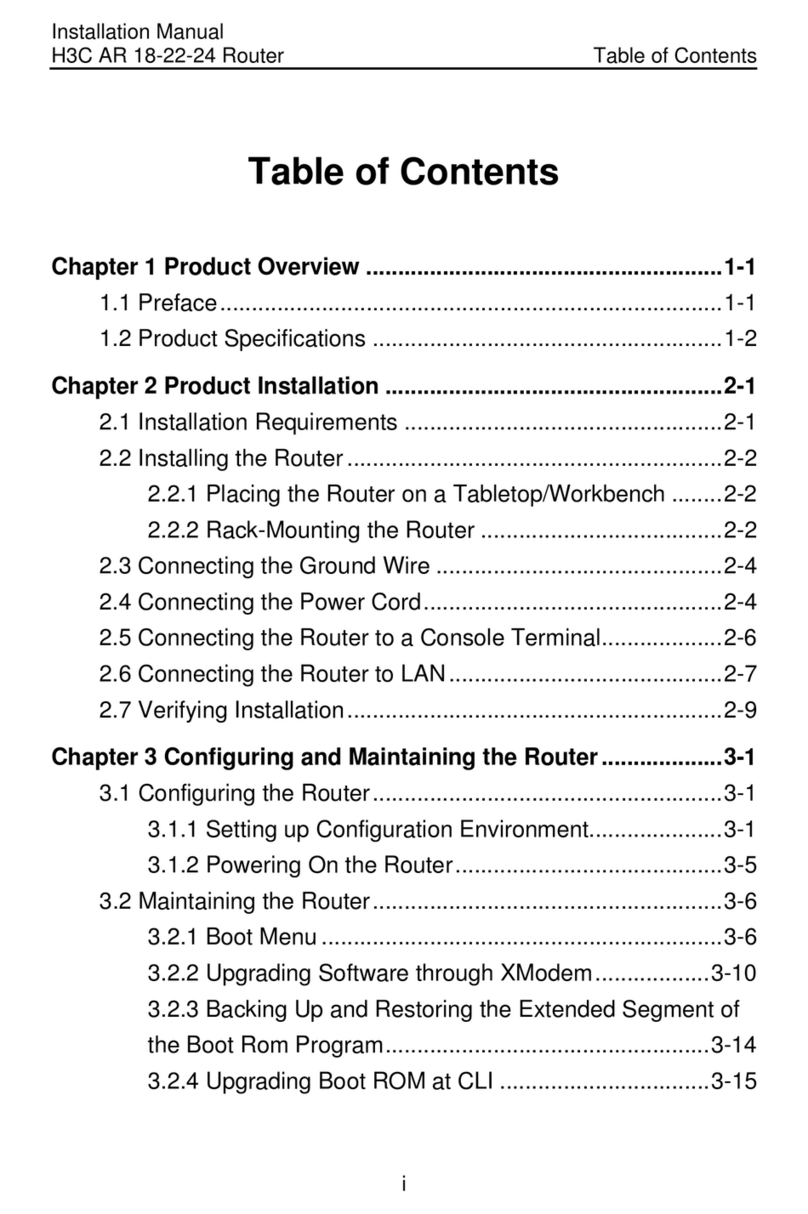
H3C
H3C AR 18-22-24 User manual
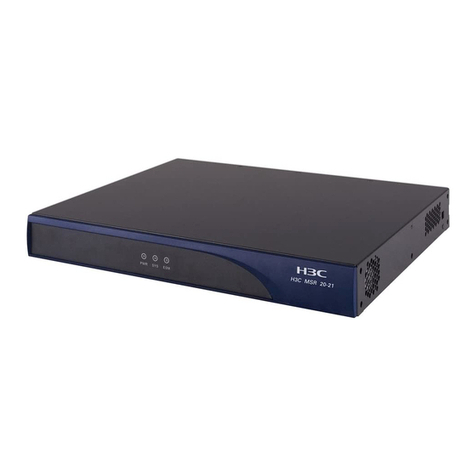
H3C
H3C MSR 20-20 User manual
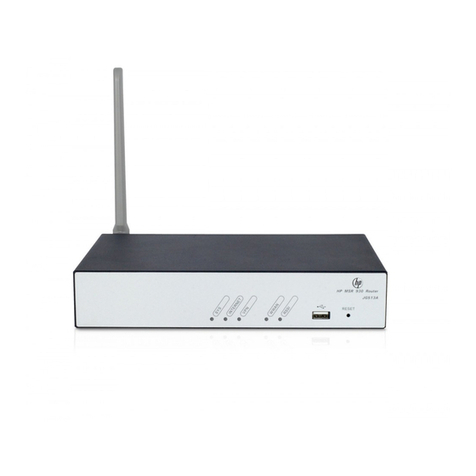
H3C
H3C MSR 930 User manual
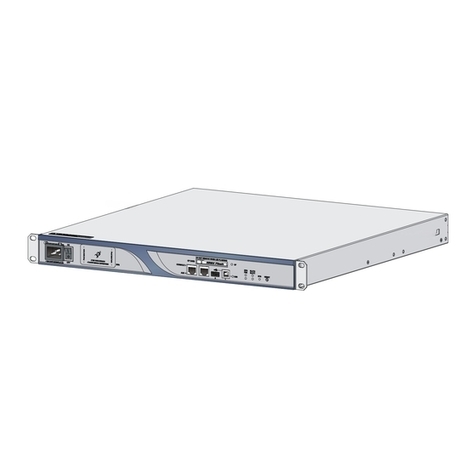
H3C
H3C SR6602 User manual
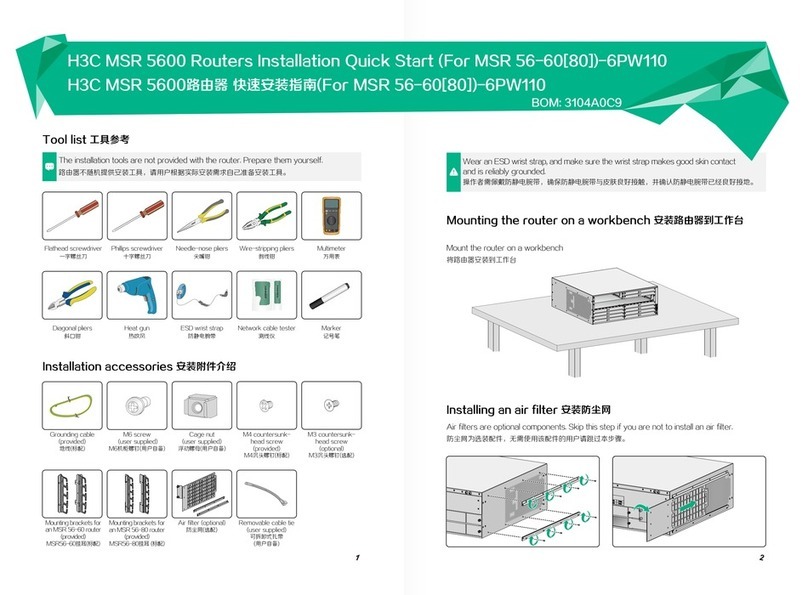
H3C
H3C MSR 5600 Operating and maintenance manual
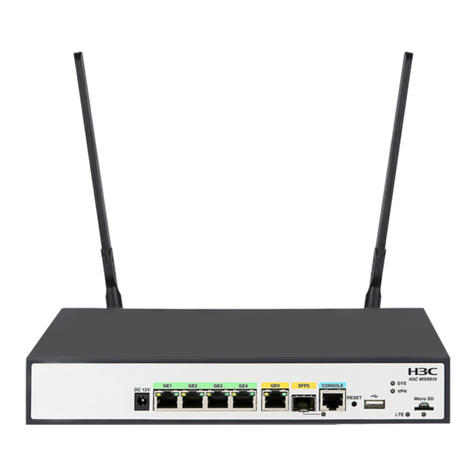
H3C
H3C MSR810 User manual
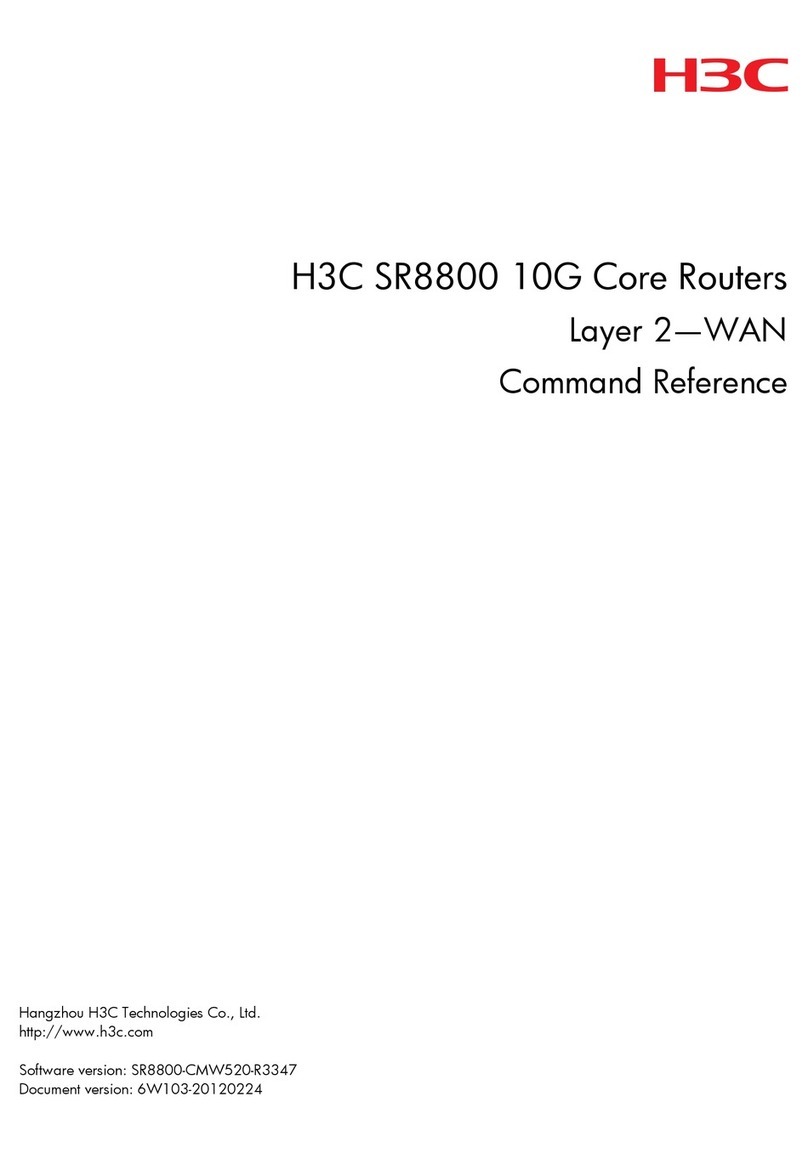
H3C
H3C SR8800 IM-FW-II Installation manual
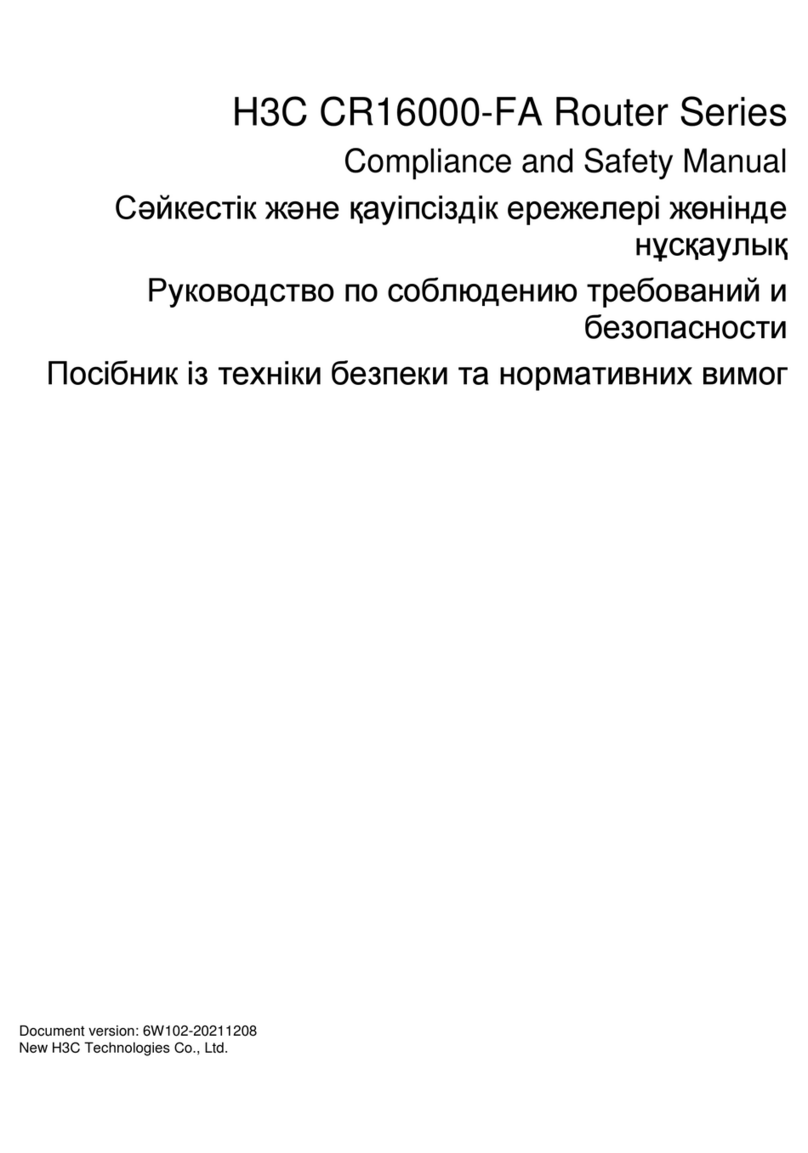
H3C
H3C CR16000-FA Series Instruction Manual

H3C
H3C MSR810 Installation manual
Popular Network Router manuals by other brands
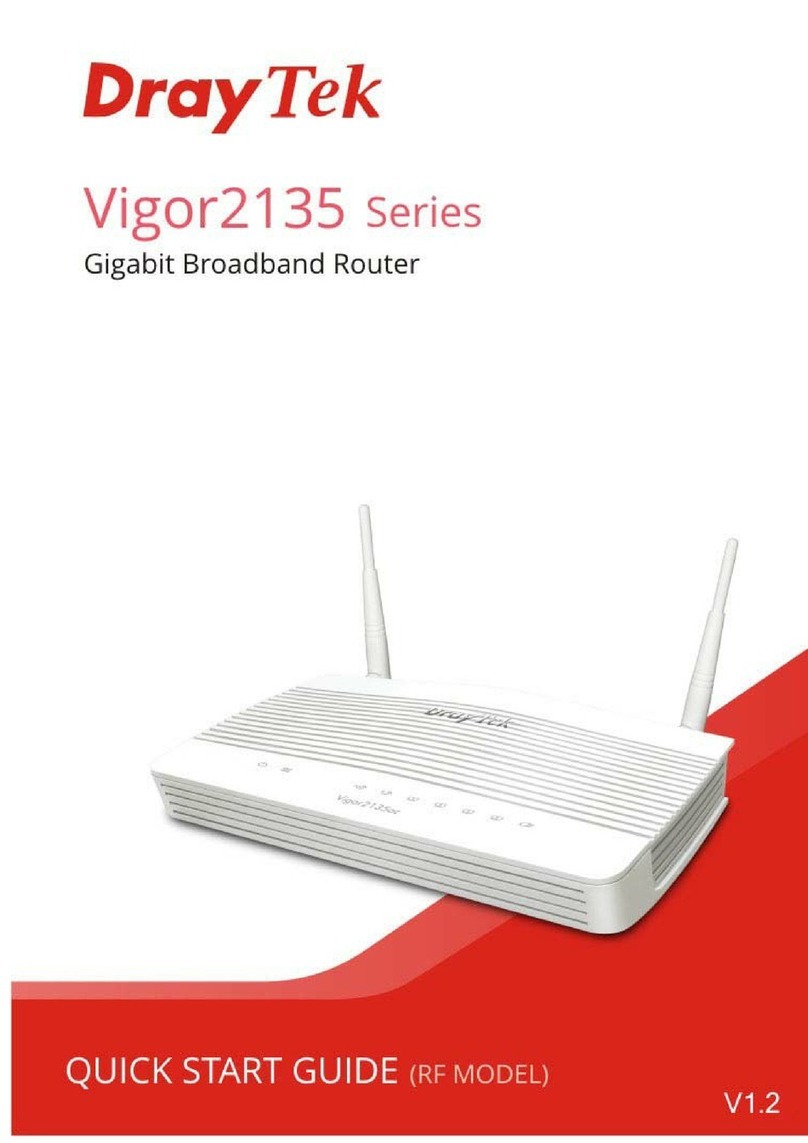
Draytek
Draytek Vigor2135 Series quick start guide
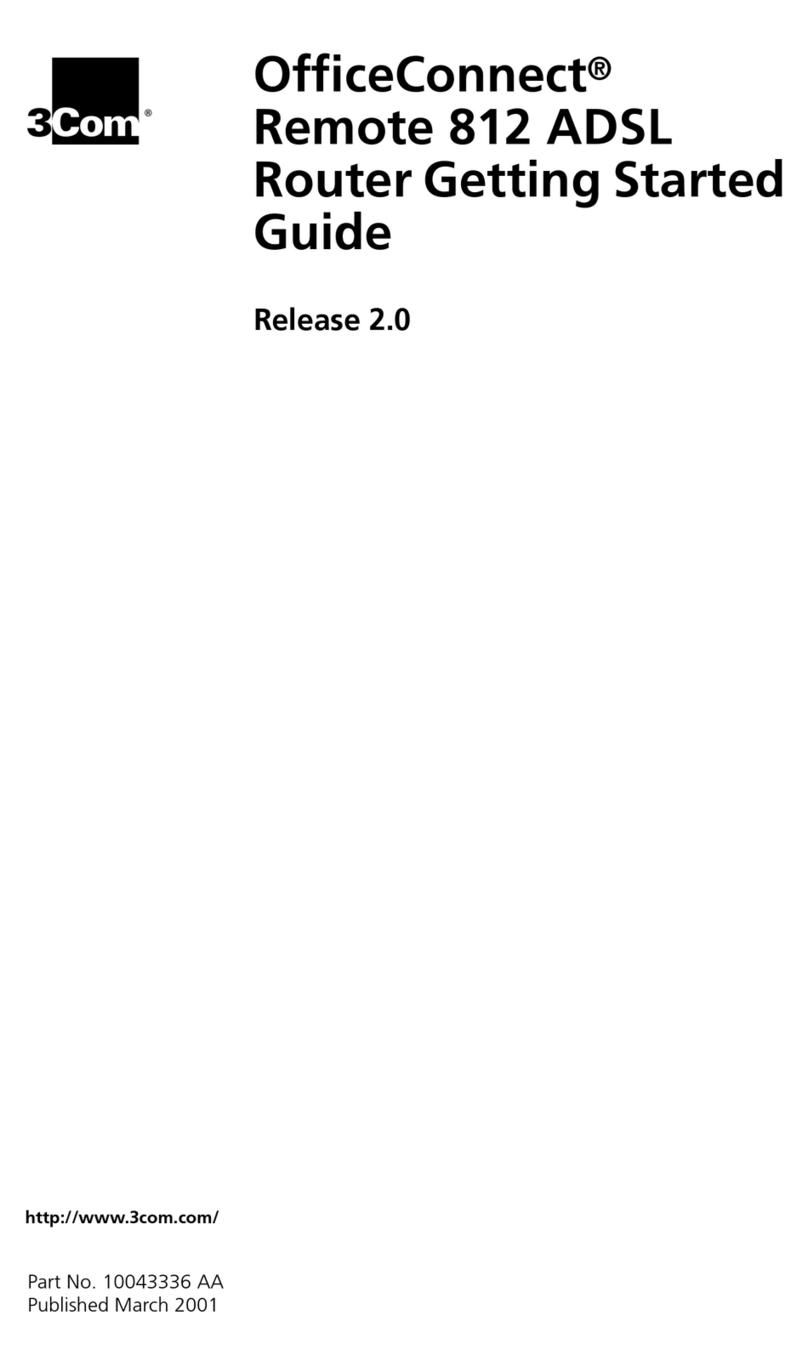
3Com
3Com OfficeConnect 3CR414492 Getting started guide
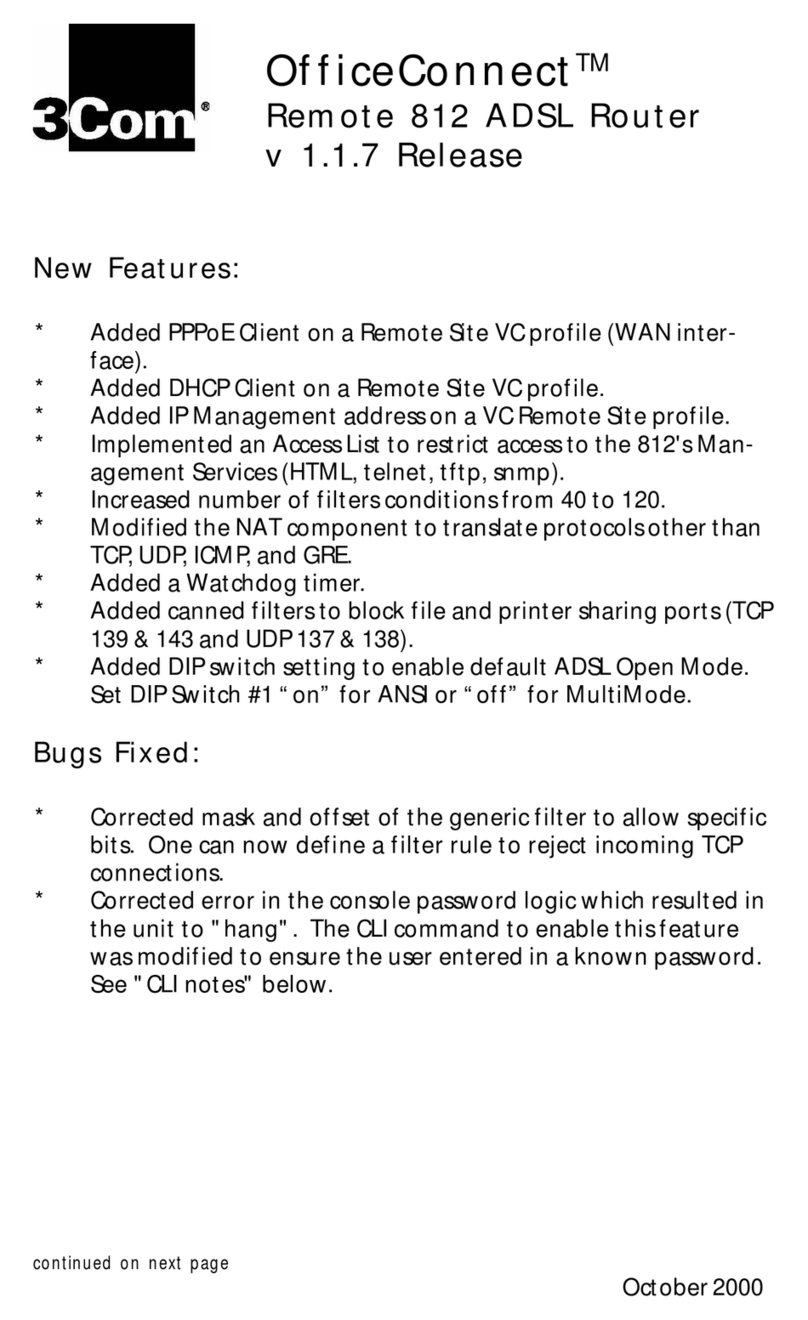
3Com
3Com OfficeConnect 3CP4144 release note
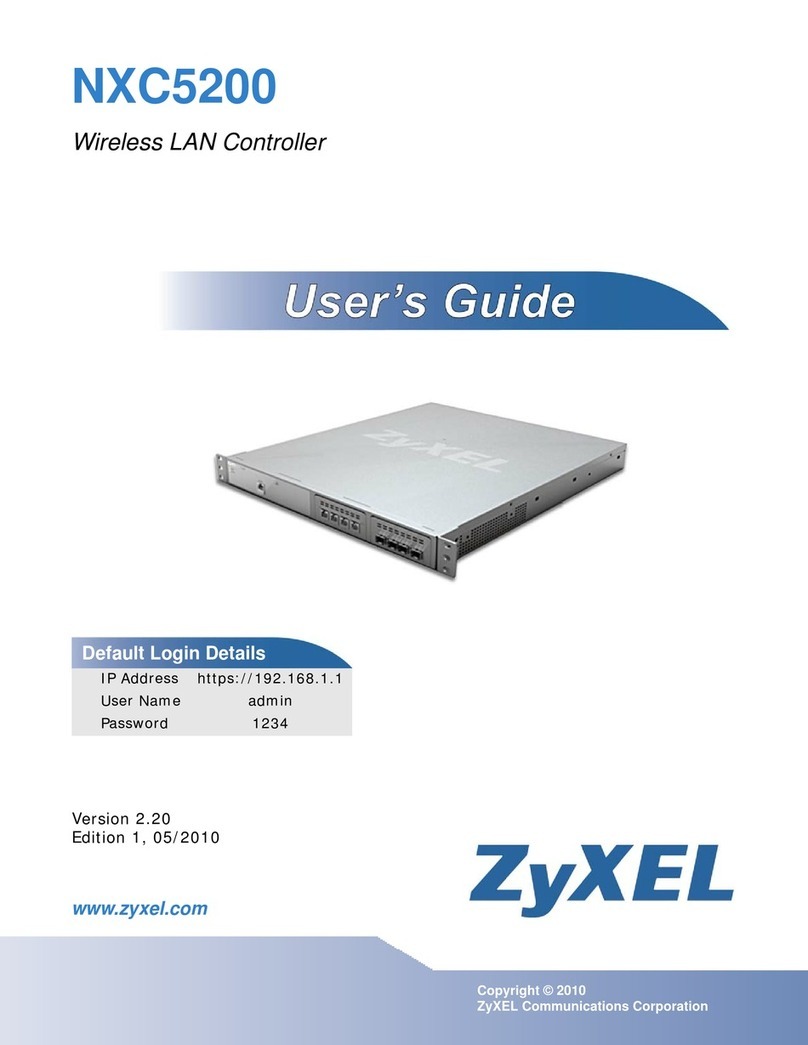
ZyXEL Communications
ZyXEL Communications NXC5200 user guide
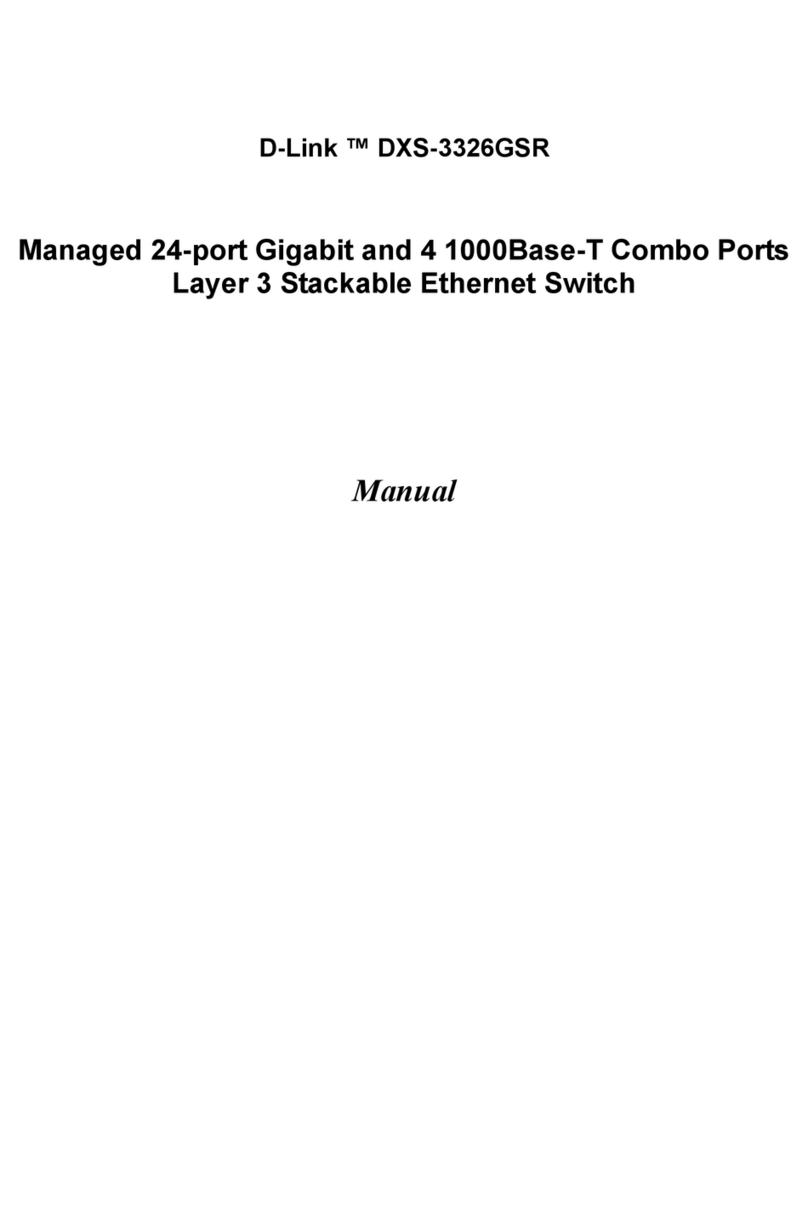
D-Link
D-Link DXS-3326GSR - xStack Switch - Stackable manual

Philips
Philips dynalite DDPB22RJ12 instruction manual
